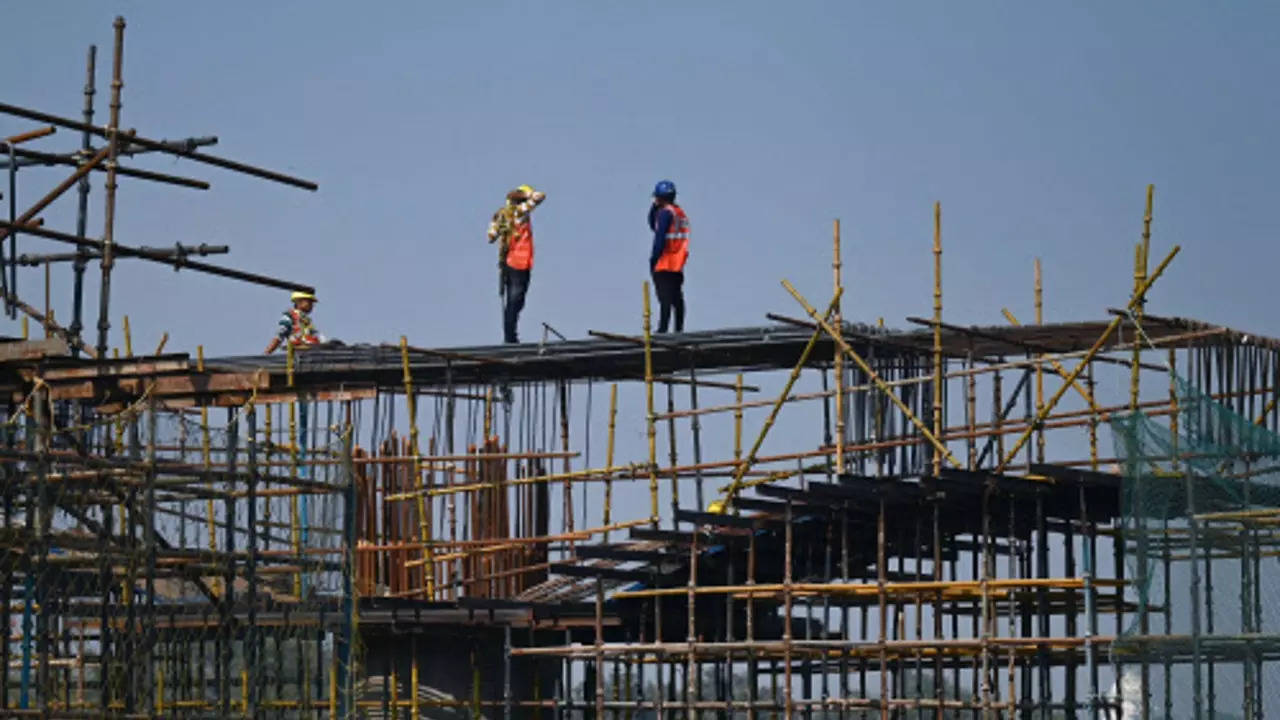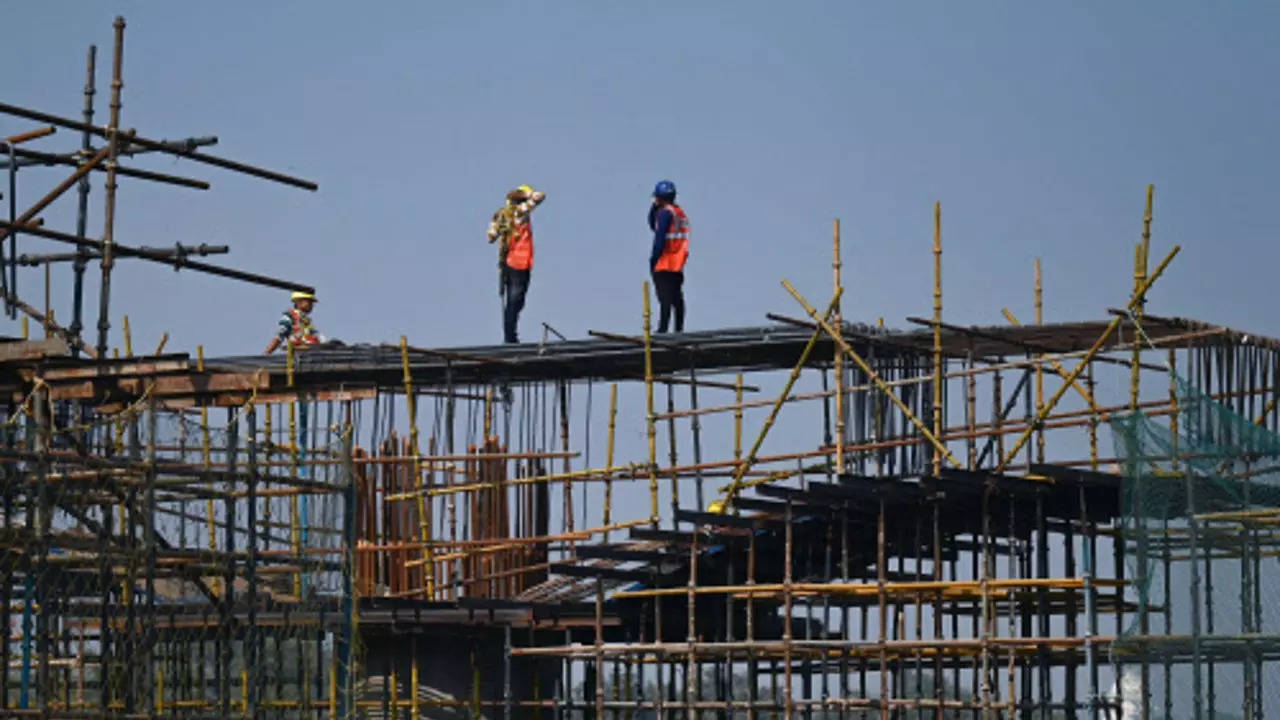India’s Q3 GDP at 4.4%; economy to grow at 7% in FY23


NEW DELHI: India’s gross domestic product for the third quarter (September-December 2022) of financial year 2022-23 grew by 4.4%, data released by the Centre showed on Tuesday.
The National Statistical Office (NSO), in its second advance estimate of national accounts, pegged the country’s growth at 7% for 2022-23, same as that pegged by the first advanced estimates that was released in January.
Besides, it revised the GDP growth for 2021-22 to 9.1% against the earlier estimate of 8.7%.
In the previous quarter (July-September 2022), India’s pace of GDP growth had slowed to 6.3% from 13.5% in Q1. For this quarter as well, the pace of growth is seen to have slowed.
The sharp fall in year-on-year growth rate is partly due to a fading of pandemic-induced base effect which had contributed towards higher growth figures in fiscal 2021-22.
The figure assumes significance as India is being looked upon as the ‘bright spot’ amid persistent fears of global slowdown and recession.
Sector-wise performance
The manufacturing sector continues to disappoint as it shrank by 1.1% year-on-year in the quarter, a second straight contraction reflecting weakness in consumer demand and exports.
Meanwhile, electricity, gas, water supply and other utility services expanded by 8.2% as against 6% last quarter.
Similary, construction also improved t 8.4% from 5.8% in Q2.
Agriculture and mining & quarrying also expanded by 3.7% each, while trade, hotels and transport fell to 9.7%.
“The major disappointment is negative growth in manufacturing, which can be attributed to weak P&L accounts of this sector. The Q2 results did indicate a fall in profits due to high input costs,” Madan Sabnavis, chief economist at Bank of Baroda told Reuters.
“Farm production is to grow by 3.7% which is on account of a good kharif crop. A revival in construction activity by 8.4% propped up low base was also supported by higher level of construction activity in both houses as well as roads,” Sabnavis added.
“Service sector components continued to do well on the back of pent up demand especially in hospitality, travel, trade which led to growth of 9.7% over 9.2% last year,” he added.
Budget 2023 lowered GDP estimates
Presenting the Union Budget for financial year 2023-24 earlier this month, finance minister Nirmala Sitharaman lowered India’s growth estimates for the current fiscal year to 7% from 8-8.5% projected earlier.
For FY24, the government projected India’s economic growth to be 6-6.8%, slightly lower than that of current year.
However, the Economic Survey tabled in Parliament just a day before the budget presentation estimated GDP to grow by 6-6.8%.
This year’s budget laid more emphasis on measures boosting economic growth of the country, especially amid widespread fears of recession. Most major economies have already started to feel the heat of a global slowdown as their corporates resort to job cuts.
India’s budget adopted seven priorities or ‘Saptarishi’ – inclusive, green growth, reaching the last mile, infra & investment, unleashing the potential, Youth power and financial sector – to deal with current economic challenges.
RBI’s GDP projections
Announcing its monetary policy outcome earlier this month, the Reserve Bank of India (RBI), projected India’s economic growth at 6.4% for 2023-24, broadly in line with the estimate of the Economic Survey.
Amid volatile global developments, the Indian economy remains resilient, said RBI Governor Shaktikanta Das while unveiling the last bi-monthly monetary policy of the current fiscal.
“Available data for Q3 and Q4:2022-23 indicate that economic activity in India remains resilient. Urban consumption demand has been firming up, driven by a sustained recovery in discretionary spending, especially on services, such as travel, tourism and hospitality.
“Rural demand continues to show signs of improvement as tractor sales and two-wheeler sales expanded in December,” he had said.
The RBI has raised its benchmark repo rate by 250 basis points since May last year to contain inflation, and economists expect a further rate hike of 25 basis points to 6.75% in April before pausing until year end.
At least two members of India’s six-member monetary policy committee have called for a pause in rate hikes, citing rising global and local risks to growth.
The central bank, however, remains focused on above-target inflation as high-frequency indicators suggests that stronger rural demand may help offset weaker urban consumption.
‘India a bright spot’
Amid the global gloom, India will still retain the tag of the fastest growing thanks to robust domestic demand while China is expected to face a slowdown due to the impact of the lockdown to prevent the spread of Covid-19.
The Indian economy has been scripting a recovery after the bruising impact of the Covid-19 pandemic but the global slowdown, the geopolitical situation, stubborn price pressures and the impact of rising interest rates have posed risks to faster expansion.
Many economists, brokerage firms and agencies like the International Monetary Fund (IMF) and World Bank have in their latest reports stated that Indian economy will be fastest growing among major economies in financial year 2022-23.
Even though existing global challenges like tightening monetary policy cycle, slowing growth and elevated commodity prices may lead to a lower growth than previous financial year, still India’s growth will be robust due to strong domestic demand.
At present, global economy is navigating through incredibly rough waters attributed mainly to global uncertainties, unfolding of conflict in Ukraine, the reaction of financial and commodity markets to the changing scenarios, tight monetary policy and more.
However, despite these hurdles, the World Bank in its latest India development update said that India showed higher resilience to global shocks and better than expected quarterly growth numbers.
(With inputs from agencies)



